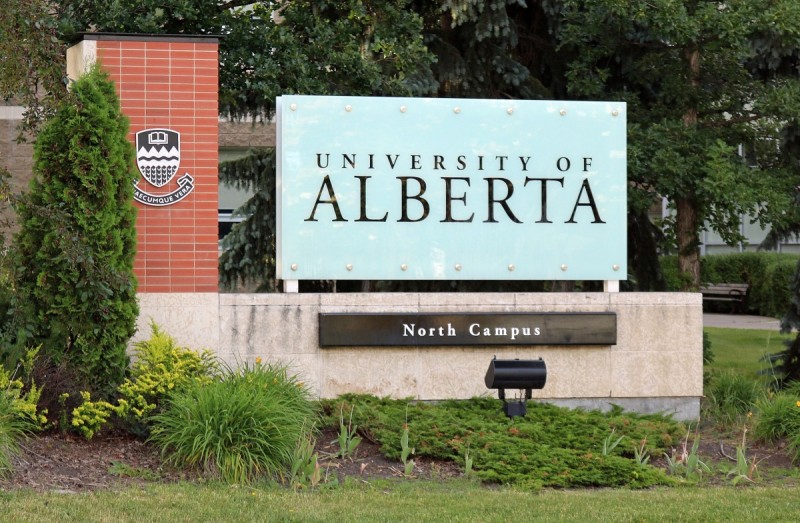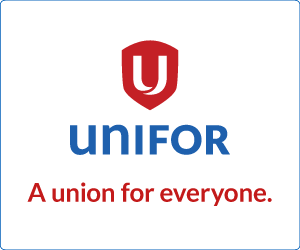An EDI policy, by any other name, appeases not the far-right
Universities have been isolated by ruling parties that are hostile to higher education

University of Alberta North Campus. Photo by Jeffrey Beall/Wikimedia Commons.
In his January 2 op-ed in the Edmonton Journal, University of Alberta President Bill Flanagan explains why a coterie of senior administrators is ditching the “language” of equity, diversity, and inclusion, or EDI (to which “decolonization” had been added in the university’s strategic plan), and replacing it with “access, community, and belonging.” This news came as a surprise to many faculty members, who were unaware that such a rebranding was in the works. They are left to surmise what the words will mean in practice, and what factors impelled the rebranding of EDI.
It should first be acknowledged that many faculty, students, and staff were critical of EDI initiatives for their perceived superficiality. As Changing the Story, a recent document published by the university’s vice-president for EDI states, feedback on EDI policies since 2019 has called for “institutional commitments that move beyond value statements.” For example, there are reports from hiring committee members that EDI considerations were absent or insignificant. Some departmental, divisional, and faculty administrators have turned a blind eye to (or are complicit in) the cronyism, discrimination, or hostile environments that have caused faculty members to leave the university. Sexist and racist discrimination is going unaddressed because victims experience existing grievance processes as unresponsive, ineffectual, and even worsening their situations. A follow-up “what we heard” report published by the VP for EDI acknowledged “the community’s concern over the perceived lack of visible consequences for harassment and interpersonal harm.”
Bill Flanagan: Why the U of A is moving from EDI to access, community and belonging | Edmonton Journal https://t.co/oojv4Mple3
— Bill Flanagan (@BFlanaganUofA) January 2, 2025
Compensation for pay inequity for women associate professors and racialized men has not been forthcoming since the 2019 settlement with women full professors. Moreover, some administrative decisions contradict EDI goals: tuition fee increases that make it harder for individuals from working class backgrounds to pay for and complete degree programs, increased reliance on contract academic staff, teaching evaluation methods that discriminate against women and racialized instructors, inadequate financial support for campus childcare centres that have long waiting lists for spaces, closure of the sexual assault crisis centre, and statements and actions from the president himself framing Palestinian students and their allies as threats to the university’s security. The administration has profiled its commitment to “Indigenization of the curriculum,” while promoting research on the oil sands extraction that ultimately serves the ongoing dispossession of Indigenous peoples (the terms “Indigenous” and “decolonization” do not appear, by the way, in Flanagan’s op-ed description of the new ACB framework).
However, President Flanagan was not announcing, in his op-ed, measures to make EDI initiatives more effective and meaningful, although there are some proposals in this regard in the Changing the Story document. The principal aim of the president’s January 2 op-ed and a January 3 television interview appears to be political: to assure the United Conservative Party (UCP) government of Alberta and its electoral base that the UAlberta will not be pursuing the “woke” aims that so antagonize them. Witness the resolutions on “DEI” passed by UCP members at their 2023 and 2024 conventions, for which the premier has expressed sympathy (notably, the UCP delegates adopt the term used in the United States: Diversity, Equity, and Inclusion). Danielle Smith recently linked “DEI” to “liberal ideologies” that she believes are funded by the federal government via its grants to Alberta’s post-secondary education institutions.
Mr. Flanagan repeats the now-familiar claim of conservatives that EDI “language” is “polarizing” and “divisive,” although he does not identify this language. The reference, presumably, is to the concepts that explain why EDI initiatives are needed in the first place, such as: discrimination, racism, sexism, homophobia, or colonialism. In fact, EDI policy documents are typically rather milquetoast in the language they use, but even terms like equity or equality have become anathema to far-right populists. Mr. Flanagan is careful not to say who is being divided from whom, or why we should flee from this conflict rather than stop and think about how and why it has been generated.
The new language seeks to placate the far-right, first, by dropping the term equity[1] and replacing it with the classically liberal principle of equal opportunity. The president refers to the goals of the “new” framework as: “equal opportunities for all,” “a university community where everyone can thrive,” and “focusing more on our shared humanity,” thereby implying that the “old” framework of EDI was somehow not focused on such good things. Really? The aim of this shift is presumably to reassure conservative politicians that no university EDI policies will limit the admissions of white men. While no evidence has been produced showing that white men have failed to secure places at the UAlberta because of diversity goals,[2] the modest decline in the enrolment of men in post-secondary education in Canada was raised as a concern by former President Indira Samarasekera in October 2009.
Similarly, the equal opportunities language appeals to the predominantly white men who occupy the highest academic ranks—along with the summits of economic and political power more generally—whose favourite defence of their privilege is the “merit only” canard. The claims that white men are the victims of “reverse racism” or “wokeism” continue to circulate in right-wing milieux and media.
Rather than explain the social hierarchies that have historically privileged white, heterosexual men and defend the necessity of making special efforts to recruit and retain members of under-represented groups, university presidents across North America are bowing to pressure from right-wing politicians to make EDI policies disappear. They are now joined by President Flanagan (who yet again represents a leap backward for the UAlberta as “leading the way” for other Canadian universities). If EDI initiatives are not to be dismantled altogether, they must at least be cloaked by terminology acceptable to the political right. This submissive response contradicts Flanagan’s reassurances (presumably directed to the professoriate) that administrators are committed to defending institutional autonomy and academic freedom (“excellence, open inquiry, and rigorous debate”). This self-censorship further conflicts with the pedagogical mission of the university—to search for the truth even when it is “uncomfortable” for some. This is not the stance modelled by UAlberta administrators in their relationship with Alberta’s governments.
Such retreats have been defended on pragmatic, strategic grounds; that is, the need to protect the university from further legislative and budgetary attacks by a right-wing government. Not only has the UAlberta been the primary recipient of UCP government cuts to post-secondary operating grants, as I and others have documented, but it has also been hamstrung by performance-based funding criteria established by these governments. Further attempting to control university research, the UCP introduced Bill 18, the Provincial Priorities Act, granting the government the authority to vet federal funding to Alberta universities to ensure that the latter supports only research projects consistent with the provincial government’s priorities. The bugaboo for the UCP and the Canadian Conservative Party appears to be the EDI requirements attached to federal grants.
Yet, the entire history of government-post-secondary relations in Alberta since the first Klein government has been one of university administrators’ attempts to appease right-wing politicians by keeping quiet publicly while seeking to reassure right-wing extremists in closed-door settings. A research-based approach to government-university relations would surely support the conclusion that such quiescence has been futile. Over my 32 years at the UAlberta, I repeatedly urged administrators—from deans to presidents—to adopt a different strategy. In lieu of merely reacting to successive provincial budget cuts through the usual “governmental affairs” diplomacy, our administrators should devote resources to continual relationship-building with Alberta communities.
The communication strategy would explain the value of higher education to Albertans not in the narrow, economistic terms used by conservative governments, but in terms of a broader range of concrete, meaningful benefits. These include giving our young people opportunities for the full development of their unique potential as well as a diversity of possible life paths. Higher education is simply young adult or continuing education that allows for a fuller development of cognitive skills and knowledge than is achieved by the end of high school and should be funded as the third phase of a universal, public education system that begins in early childhood. It should be as accessible to youth from rural and northern Alberta as those from urban areas—from farming and working class families as well as middle class households. A well-educated citizenry is essential not only for social development, collective well-being, and good government, but also for robust democracy. Imagine how much more support universities would have if more citizens viewed them as the normal continuation of their education and experienced the benefits of this education.
More resources should be dedicated to discussions with the university’s communities about how researchers and teachers can help address their needs. University-community collaborations should be a priority for the VP Research. Imagine how towns and city neighbourhoods might view universities differently if university research projects were co-solving their problems, improving their daily lives, and validating local knowledge.
The spokespersons for universities must offer a consistent, principled defence of academic freedom and institutional autonomy from the governments of the day, explaining to the public (using concrete examples) why the independence of researchers and teachers from political or private masters is essential for the university to fulfill its mission to serve the public good. Such steadfastness may not avert coercive government actions, but nor will subservience. We see this again and again; bullies are never appeased by submission. And if the presidents of post-secondary institutions would stand together in responding to the bullies, they might be surprised by their collective leverage.
There is also moral harm in failing to question the reasoning behind or legitimacy of such government policies as the privatization of higher education or the political direction of university research. Flanagan writes that “it is not the university’s role to take ideological positions,” yet the tasks he assigns to the university cannot be realized in the absence of a political framework that guarantees liberal democratic rights and academic freedom and entrenches universal education as a public good. Nor can the university escape the reality that its policies of anti-racism, fighting homophobia, supporting gender equity, or decolonization are inherently political. Of course they are. Rather than trying to deny their political nature through semantic subterfuge, join the democratic fight. Stand with those who do not have the luxury to duck and hide. This might earn the kind of respect universities lack in Alberta—even from their right-wing detractors.
Much has been written about the importance of communicating and implementing the public service functions of higher education if these institutions are to earn public support. To date, the chief executives of universities have failed to make this their central task. As a result, universities have been isolated by ruling parties that are hostile to higher education—and especially the analytical orientation and democratic ethos rooted in the non-vocational disciplines.
Ultimately, the only protection for universities from right-wing governments is broad popular support from citizens who understand the benefits of higher education. The rhetorical engineering performed in Flanagan’s op-ed will not persuade hardcore UCP supporters and politicians that a liberal arts education and liberal values are not their political enemies, thereby forestalling further attacks from these quarters. Rather than issuing word salads of dissimulation meant to placate right-wing politicians while preserving shreds of academic integrity, administrators like President Flanagan should create opportunities to communicate directly with Albertans about what they need from their universities.
Laurie E. Adkin is a professor emerita in the Department of Political Science at the University of Alberta.
References
1. The concept of equity reflects the recognition that same treatment does not always mean fair treatment, because humans have significant differences in their needs and capabilities. The same infrastructure, for example, does not give every person equal access to a facility. The same work norms do not work equally well for all individuals; they favour some over others. If the aim is to include everyone, physical structures, work norms, and eligibility requirements for access to services must be adapted to different needs and capabilities. We should ask which group has been historically privileged by the rules and traditions that currently govern the design of spaces, the work model, welfare state policies, research methods, and many other aspects of social life. Pretending that these norms and traditions are neutral, when they are not, is a means of excluding certain groups from occupations, ranks, public life, and so on. If access to a network of business owners and wealthy donors is necessary to run a successful campaign for political office, most citizens will never be able to seek office—even if they have the formal political right to do so.↩
2. In Canada, boys have a lower secondary school completion rate than girls. In 2008, the graduation rate gender gap in Canada was 72 percent for boys versus 81 percent for girls (OECD 2010). The gender gap for completion of academically oriented secondary school programs was even greater (69 percent for boys and 79 percent for girls). The OECD averages for total secondary school graduation rates for the same year were 76 percent for males and 84 percent for females. Thus, if boys are being streamed out of higher education, this process is happening at the elementary and secondary education levels. Until the late 20th century, women were under-represented in post-secondary education. This trend was reversed in Canada by 1990 (at the undergraduate level), when women comprised 54 percent of the post-secondary student population (OECD 2008). By 2005, women comprised 58 percent of post-secondary students in Canada. However, gender segregation by subjects continues to be significant, with men predominating in engineering and sciences, and women in education, arts, humanities, and health fields (OECD 2008; Alberta 2018). In Alberta, the gender gap in university enrolment (not the entire post-secondary education sector), as reported in 2012, was about 40 percent male and 60 percent female (Alberta 2012). Among the explanations offered for this were the greater likelihood of young men to enroll in post-secondary education focusing on trades and technology skills, and the lower graduation rate of boys from secondary schools. When the resource sector is booming, young men often choose to leave school early to take high-paying jobs in the oil and gas and construction industries (see: Alberta 2018; Paskey 2022; Toneguzzi 2012). Gender socialization—which is precisely what programs like Women’s and Gender Studies question—plays a large role in streaming boys out of university degree programs in fields other than engineering, sciences, and business, and in explaining their comparatively high non-completion rate. In 2023, the gender ratio for the entire student population at the University of Alberta was reported by the university as being 54.7 percent female and 45.3 percent male (University of Alberta 2023). The UofA’s 2023 demographic census of students found that about 43 percent of students identify as members of a visible minority, and almost five percent identify as Indigenous.↩










